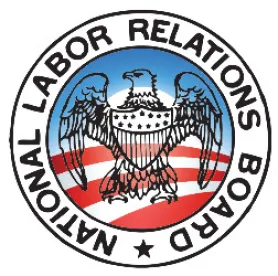In a decision, Thryv, Inc., 372 NLRB No. 22, that was foreshadowed by recent invitations for briefs and prosecutorial conduct by NLRB General Counsel Jennifer Abruzzo (see our prior posts here and here), the National Labor Relations Board (“NLRB” or “Board”) issued a significant ruling on December 13, 2022, that the standard make-whole remedy for employees harmed by an employer’s unfair labor practice (“ULP”) may include compensation for “all direct or foreseeable pecuniary harm” as a result of the ULP.
Prior to this decision, where an employee was wrongfully discharged in discriminatory fashion for exercising their rights under the National Labor Relations Act (“NLRA” or “Act”), the employer was typically required only to make the employee whole through back-pay and/or reinstatement. Now, employees can seek recovery of all other financial harms they can show that they have suffered as a direct result of the wrongful termination.
This decision applies retroactively to every case in which the Board’s standard remedy would include make-whole relief for employees, and is sure to have significant consequences for employers faced with an unfair labor practice charge.
The underlying case, involving a finding that a particular layoff violated the Act was not remarkable. But, the Board used the case to “revisit and clarify our existing practice of ordering relief that ensures affected employees are made whole for the consequences of an employer’s unlawful conduct.” The Board expressly ordered that the respondent employer must compensate all affected employees “for all direct or foreseeable pecuniary harms suffered as a result of the respondent’s unfair labor practice.”
The Board did not detail the specific categories or types of damages that could be received in a case. Instead, in addition to the standard make-whole remedies like reinstatement and/or back-pay, the NLRB General Counsel can, after there is a finding of liability, present evidence as to the amount of actual pecuniary harm, the direct or foreseeable nature of that harm, and why that harm is due to the respondent’s ULP. Once that is presented, the employer can present evidence challenging the amount of money claimed, argue that the harm was not direct or foreseeable, or that it would have occurred regardless of the ULP.
The rationale provided by the Majority in changing decades of case law (Chairman McFerran and Members Wilcox and Prouty, with Members Ring and Kaplan dissenting) was that this standard satisfies the Board’s statutory obligation to provide “meaningful, make-whole relief for losses incurred” as a result of the respondent’s unlawful conduct, and is consistent with the manner in which the Board has previously exercised its remedial authority under the Act.
In particular, the Board noted that employees who were laid off in violation of the Act may be forced to incur significant financial costs, such as out of pocket medical expenses, credit card debt, or other costs simply in order to make ends meet. Again, the NLRB declined to describe every type of conceivable remedy that could be ordered pursuant to this standard and left that to be interpreted based on the standard issued here and the body of precedent.
The NLRB went out of its way to say that it was not requiring an award of “consequential damages,” noting that it is a term of art used to refer to a specific type of legal damages awarded in other areas of the law (like in torts and contracts) and fails to describe the make-whole remedy the Board has espoused here.
Finally, and critically, the Board made clear that this shift in remedial authority for make-whole relief is not to be exercised only in “extraordinary” or “egregious” cases—rather, it should be the standard applied in every make-whole case. Indeed, the Board claimed that these types of remedies are not punitive, intending only to punish “bad actors,” but are intended to rectify the harms actually incurred by the victims of the ULPs and are restorative in nature.
Takeaways
The NLRB’s directive opens a Pandora’s Box for employers. Application of this new standard will make the calculation of potential liability difficult to predict for employers, because the damages owed may vary based on the individual financial circumstances of a particular employee and the impact of the adverse employment action on that employee.
Application of this new standard will put a greater focus at the post-trial ULP compliance stage, and might make settling ULPs more difficult given the uncertainty of these types of damages. While the NLRB General Counsel will have to satisfy its burden of proof with evidentiary support to substantiate the employees’ claims for pecuniary harm, such as through receipts, invoices, bills, and other financial statements, the fact that the NLRB made clear that any ambiguity or uncertainty in the evidence must be resolved in favor of the wronged party—not the wrongdoer—compounds the impact of this decision on employers.
Although the NLRB cautioned that it has faith in the compliance proceeding to expeditiously and sensitively deal with the more expansive process that will result when trying to resolve these issues, it is conceivable that ordering these additional remedies will delay resolution of the ULP and/or unnecessarily intrude on the privacy rights of the employees, given the types of evidence that might be required.
This will certainly be an important area to monitor as the case law develops and the Board and ALJs issue case-specific rulings based on this new standard from the Board.
Member John Ring’s term ends on December 16, 2022, so we expect the Board to issue a number of decisions that have been pending with the full 5-member Board before the end of the year.
As always, we will continue to keep you posted.





 />i
/>i

